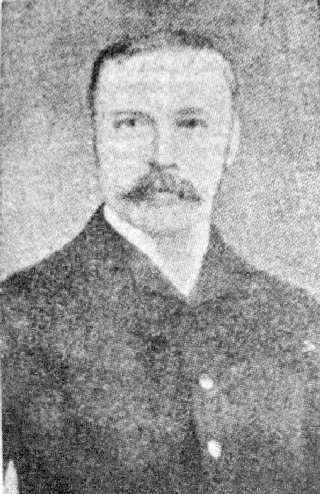 |
[above]
Alexander Bell Gemmell |
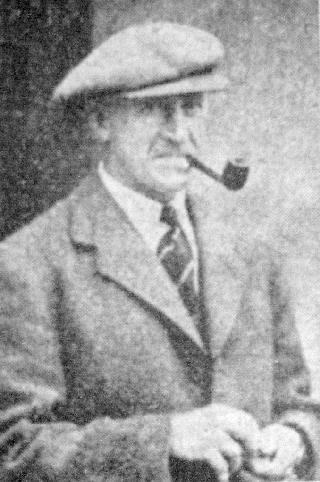 |
[above]
Thomas Charles Dunlop |
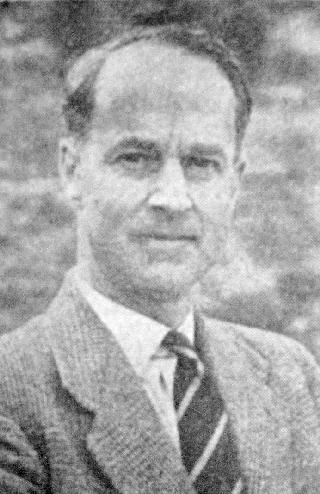 |
[above]
William H. (Billy) Dunlop |
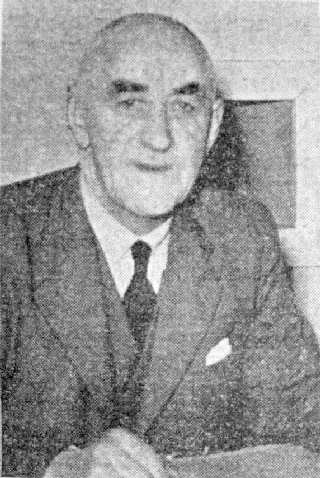 |
[above]
George Goodfellow |
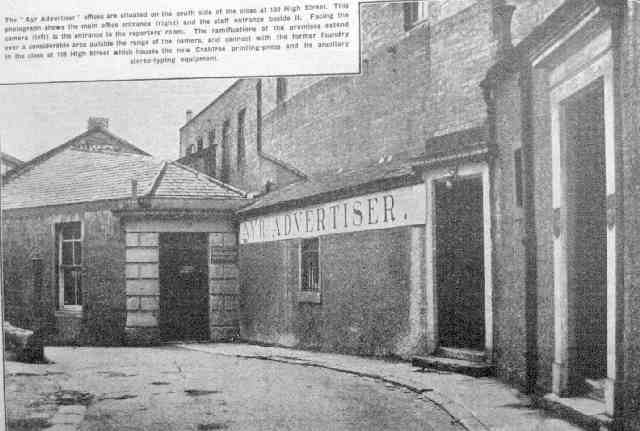 |
[above, 1953]
'The "Ayr Advertiser" offices are situated on
the south side of the close at 100 High Street. This photograph
shows the main office entrance (right) and the staff entrance
beside it. Facing the camera (left) is the entrance to the
reporter's room. The ramifications of the premises extend
over a considerable area outside the range of the camera,
and connect with the former foundry in the close at 108
High Street which houses the new Crabtree printing-press
and its ancillary stereo-typing equipment.' |
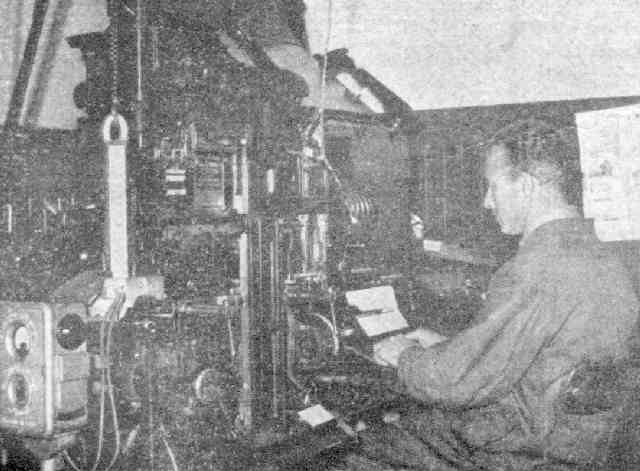 |
[above]
One of the company's 5 linotype machines in 1953. |
|
Through the latter half of the 19th Century, the Advertiser
continually widened its scope, and the range of contributors
to whom it looked for copy. Many of the local or parish
correspondents were notable, within their own communities,
in their own right. These included John Kerr, originally
the schoolmaster at Dalry, who completed his career as
H.M. Chief Inspector of Schools for Scotland; Provost
McCreath of Girvan; and a host of ministers and landed
proprietors. There were also the poets, such as Sarah
Parker (‘The Irish Girl’, 1824-1881), John Ramsay (1802-1879)
and Ebenezer Smith (1835-1910). The agricultural editor
for over forty years was James Drennan (c.1818-1892),
a practical farmer and land valuer, who championed many
agricultural improvements through the pages of the Advertiser.1
In the advertising columns, the highlights for many years
of the early 19th Century were the weekly ‘effusions’
in verse of the Kilmarnock draper and Chartist politician,
Hugh Craig (1795-1858).
Under Hugh Allan’s editorship, there was a succession
of assistants and reporters. These included William McIlwraith
(died 1914), who left for Australia, where he rose to
be proprietor of the Rockhampton Bulletin in
Queensland2; Arthur
Morgan (c.1841-1904), who exchanged a career in journalism
for a post as the Burgh Registrar for Ayr;3
Thomas Brown who died c.1895; and Thomas Kay, who ultimately
succeeded Allan as editor.4
William R Mackintosh left the Advertiser in 1877
to become the editor of The Orcadian in Kirkwall,
and was also the proprietor of that paper from 1895 until
his death in February 1918.5
On the shop floor there was David Murray Lyon (c.1819-1903).
Lyon served his apprenticeship with the Advertiser,
beginning c.1831, before spending a short time in Edinburgh
and 7 years in Aberdeen. In 1847 he was invited by Thomas
Gemmell to return to the Advertiser as foreman
printer, and he remained with the paper until 1877. During
his time with the paper, he developed his literary and
research skills, beginning with a national prize-winning
essay on the Sabbath in 1850. He used his diligent research
skills in town and kirk records to produce articles for
the paper, as well as various Masonic histories, culminating
in a well-received history of the Order in Scotland in
1873. In 1877 he was, in modern parlance, ‘headhunted’,
and appointed as Grand Secretary to the Freemasons of
Scotland, a post he held until he retired in 1901. A projected
history of Ayr never materialised, due to the pressures
of his duties once he moved to Edinburgh after his appointment
as Grand Secretary.6
During Allan’s long occupation of the editor’s chair,
there were changes in the ownership of the newspaper.
With the issue of 12th November 1874 the business became
known as T. M. Gemmell & Son. It was Thomas Gemmell’s
second son, Alexander Bell Gemmell, who took on the family
newspaper business. Initially, as a young man, he went
to Australia, and tried his hand at sheep farming, but
he returned to Ayr in 1871, and joined the family business.
Thomas Macmillan Gemmell slowly withdrew from active involvement,
finally ceased to have a formal link with the paper in
1880, but continuing to be looked upon as an eminence
gris until his death on 12th September 1889.
Gemmell had ‘imposed his individuality upon the paper,
which prospered under his care, and his name became familiar
throughout the county as of one whose opinions were of
weight and influence.’7
His obituarist (probably Hugh Allan) goes on to say that,
It is hardly for us to pass judgement on Mr Gemmell’s
qualities as a writer and newspaper manager. But in
justice to his memory we may be allowed to say that
he always set up for himself and those associated with
a high ideal of the responsibilities of a journalist.
In especial he studied to secure perfect accuracy in
matters of fact, and avoided, as far as it was possible
to avoid, the publication of things calculated to injure
or give pain to individuals; and he was careful to exclude
all that was unsuitable for reading in the family circle.
He maintained at all times the independence of his paper,
and refused to be the mouth-piece of any clique or coterie.8
Away from the newspaper, Gemmell’s main interests lay
in public service, including membership of Ayr Burgh Council
and the Commissioners of Supply for Ayrshire. He was particularly
interested in the Ragged and Industrial School movement,
and took a particularly close interest in the progress
of the Ragged School in Ayr, helping it develop from a
single storey house in Cross Street, Wallacetown, to the
purpose-built School at Commonhead. His chief sporting
interest was field sports, and for many years he owned
a hunting estate, Knockdhu, in the southern part of the
county.9
Thomas Gemmell is the one person who has done most to
ensure that the Ayr Advertiser of the 19th Century
can be regarded as one of the best local newspapers in
Scotland of that period, and his conduct and management
of the paper, as a business, ensured that it was sufficiently
strong to survive his death, and to prosper into the next
century. He was, of course, well served by his editor,
Hugh Allan. The Advertiser is, essentially, the
creation of these two literate, interested and publicly-minded
men.
A.B. Gemmell had assumed full management control in 1880,
became sole proprietor after his father’s death, and remained
at the head of the business until his death in 1900, at
the relatively early age of 53. Alexander Gemmell is characterised
as ‘rather retiring’; with regard to the conduct of the
newspaper ‘he has … carried on mainly on the lines laid
down by his father.’10
The strength of the paper at his father’s death, and the
presence of the sterling Hugh Allan as editor, ensured
that the paper continued to thrive during what seems to
have been the essentially hands-off ownership of A. B.
Gemmell.
The early years of the 20th Century also marked the end
of Hugh Allan’s reign as editor, with his death on 19th
March 1908. For the last ten years of his life, and his
editorship, Allan was totally blind, and relied on having
the Scotsman and the Glasgow Herald read
to him each morning.11
Nonetheless, Allan’s long period at the helm had ensured
that the Advertiser was a paper of true quality. For a
long period he and the paper were synonymous: his obituary
spoke at length of the qualities which he brought to the
post, and which have meant subsequently that Allan’s Advertiser
has remained of such value to local and national historians:
To the Advertiser he devoted the best that
was in him. His qualifications were admirably suited
to his work. As a reporter he had the perceptive sense
highly developed. Amid the apparently interminable talk
of a public meeting he could always be relied upon to
keep hold of the main thread of discussion, to sort
out the grain from the chaff, and to present to the
public a concise, readable and informative record of
the business. He was indeed in this sense more than
a reporter: he was a photographer, if the term may be
allowed. So was it with all branches of reporting work.
His alert mind was quick to perceive the relative importance
of things and to deal with them accordingly. In the
higher branches of journalistic work also he was eminently
successful. As a writer discharging the duty of public
criticism of men and affairs he was actuated by the
highest sense of public spirit and justice. His judgment
was rarely at fault, his appreciation of the pros and
cons of public question never.12
The obituarist (probably Thomas Kay) goes on to suggest
that, occasionally, from a desire not to offend, Allan
was less critical than he could have been. In his later
years he contributed much to the paper on various aspects
of the history of, particularly, Ayr. His ‘Ayr Fifty Years
Ago and Since’ remains a standard source for study of
the town in the mid 19th Century. The obituarist regrets
that he could never be persuaded to go further and complete
a history of Ayr, but ‘he could not be induced to [do
so], and the town and district is to-day poorer than it
might have been.’13
A. B. Gemmell was succeeded by his nephew, T. C. Dunlop,
but the business continued under the firm name of T. M.
Gemmell & Son.14
Thomas Charles Dunlop (1878-1960) was the son of William
Hamilton Dunlop and his wife, Janette McCracken Gemmell,
the youngest of Thomas Gemmell’s four daughters. W.H.
Dunlop was a solicitor and bank agent, as well as the
proprietor of the estate of Doonside, at Alloway. It was
through his exertions that the Monument Trustees were
able to acquire Burns’ Cottage from the Shoemakers Incorporation
of Ayr. However, it was his son, Thomas Charles, who took
possession of the Ayr Advertiser following the
death of the unmarried A. B. Gemmell in 1900. According
to Dunlop himself, he joined the paper on 1st April 1900.15
At that time he was the youngest newspaper proprietor
in Scotland, while Hugh Allan was the oldest editor of
any newspaper in Great Britain.16
During his long period of ownership he acquired the Ayr
Observer in 1909. While he was able to leave the running
of the paper to two long-serving editors, Hugh Allan and
Thomas Kay, Dunlop ‘carried on the liaison between the
business and the affairs of the county. With his interest
in so many activities, especially in the sporting sphere,
the newspaper became closely related to various sections
of the community.’17
He remained as sole proprietor of the paper until June
1938, when the business was transformed into a limited
company, T. M. Gemmell & Son Ltd., with Brevet-Colonel
Thomas Charles Dunlop, of Sauchrie, Maybole, and William
Herbert Dunlop, CA, of Airthrey, Corsehill Road, Ayr,
as directors. The company was established with a capital
of £15,000 in £1 shares, and acquired the
assets of T.M. Gemmell & Son, including the copyright
of the Ayr Advertiser, and the assets of the
Ayr Observer Co.18
Under Dunlop’s proprietorship, the politics of the paper
drifted rightward. The Liberal Unionists became part of
a resurgent Conservative and Unionist Party, and the paper
generally took the view of that party. Dunlop’s obituary19
makes little of his involvement with the newspaper. Instead,
it concentrates on his sporting interests and abilities.
First and foremost he was a cricketer (a wicketkeeper),
and played for Scotland on a number of occasions. He captained
Ayr Cricket Club for 30 years, stepping down in 1939 at
the age of 61. He was also a keen racing sportsman, both
as an owner and a rider, and treasurer of the Western
Meeting Club from 1934 until 1960. He also played rugby
for West of Scotland, and ice hockey for Ayr Doonside.
He had the only squash court in Ayr, and was also a golfer,
curler and huntsman: he had been both a former Captain
of Prestwick Golf Club and a former Master of Foxhounds
with the Eglinton Hunt.
Hugh Allan was succeeded by Thomas Kay, who had been
assistant editor since 1895. Kay started his career on
the Ayr Observer, and then spent some years at
the Ayrshire Post, ‘but escaped before it had
time to develop my opinions on wrong lines.’20
Kay died in December 1937, at the age of 64. Born c.1873
in Glasgow, but educated in Ayr, Kay initially intended
to train as a schoolteacher, but began his working career
in the offices of the Ayr builders, J & D Meikle.
He quickly moved into journalism, firstly with the Ayrshire
Post, before a brief period with a newspaper at Dewsbury,
Yorkshire. He returned to Ayr, and to a post with the
Ayr Advertiser. From 1904 he was effectively
editor, as Allan’s blindness prevented him regularly attending
the office. Kay was ‘a capable journalist, with a wide
knowledge of men and affairs, and gifted with a facile
pen, his writing was marked by fearless and independent
criticism, and he played an important part in the formation
of public opinion on local affairs.’ In his youth a footballer
with Ayr Parkhouse, in his latter days he was a regular
at Somerset Park, and was also the Scottish racing correspondent
for the Glasgow Herald.21
Over the 79 years from 1858 to 1937 the editor’s chair
at the Advertiser was occupied by only two men
– Hugh Allan and Thomas Kay. This long period of stability
probably marks defines the period at which the Advertiser
was at its best, coinciding as it does with the period
during which local newspapers bore their greatest power
and influence.
The editor’s chair was next held, briefly, by John McCartney
(c.1869-1944). He retired as editor of the Ayr Advertiser
in March 1938. He had had 50 years in the newspaper
business. He began as an apprentice on the Ayrshire
Post, where he was under William Robertson, the journalist
and historian, and the chief reporter, James McBain.22
From the Post he moved to the Ayr Observer,
rising in time to be its editor, before coming to the
Advertiser after the Observer was closed
down in 1930. At a presentation to mark McCartney’s retirement,
his local rival, John Ferguson Macnair, editor of the
Ayrshire Post, referred to his fellow journalists’
respect for him. He could say this because he knew when
he worked on the Glasgow Herald, that every story
that came from John McCartney would be accurate, correct
down to the last comma, and all they had to do was pass
it on to the compositors.23
McCartney enjoyed six years of retirement before his death
in September 1944.24
Following T C (Sir Charles following the award of a knighthood
in 1955) Dunlop’s death in 1960, chairmanship of the firm
passed to his second son, William H. (Billy) Dunlop (1907-1982).
Billy Dunlop had joined the business in a managerial capacity
in 1935, and became managing director of T.M. Gemmell
& Son Ltd after he returned from military service
in the Second World War. Billy Dunlop retired from active
involvement in the business on his 65th birthday in 1972.
During Billy Dunlop’s period as managing director, the
newspaper celebrated its 150th anniversary in 1953. The
edition of the Ayr Advertiser for 6th August
1953 made much of this, and has been of considerable use
in preparing this article. Much of the material in that
paper came from a celebratory booklet produced for the
paper by one of its staff, Hugh McGhee, with assistance
from five pupils at Ayr Academy: J Winnerah, A Smith,
F K Young, D B Young and D McCallum. At the obligatory
celebratory dinner, Billy Dunlop thanked them for ‘a very
fine job of work’; ‘they had delved into the old files
and had produced a very fine booklet’.25
The dinner was also treated to a film showing the production
of the paper, ‘Thro’ Our Pen’, made by George Crockett,
assistant manager at the Gaumont.26
John McCartney had been succeeded as editor in 1938 by
George Goodfellow (1887-1967). Goodfellow retired in September
1953, shortly after the 150th anniversary celebrations.27
The son of an estate worker, who came to Alloway from
the Roxburghshire estates of the Earl of Minto, he had
joined the Advertiser in 1903 as an office-boy,
and had worked his way up, by assiduity and a capacity
for hard work, to become editor, and also a director of
T.M. Gemmell & Son Ltd.28
Goodfellow had, of course, been editor of the paper during
the Second World War, when the press, generally, had had
to deal with paper shortages and news censorship. Working
with Billy Dunlop, Goodfellow had overseen considerable
changes in the character of the paper, changes designed
to make the paper entirely local. One of the biggest changes
he had overseen had been the decision to put news on the
front page: the first issue to be published in this format
was that of 17th April 1941. Other changes had been the
introduction of photographs, taken and developed by the
paper’s own staff, a change to a smaller size of paper,
and more prominence given to headlines and sub headings.
In 1953 it was considered that the policy had paid a handsome
dividend, for whereas the circulation in 1935 had been
around 4000, by 1949 it had topped the 15,000 mark.29
Towards the end of Goodfellow’s period in the editor’s
chair, the company had appointed an assistant (and prospective)
editor: much like the concept of ‘Assistant and Successor’
used in the Church of Scotland. The contract of the first
of these had, however, not been renewed, and in 1953 George
Donaldson was appointed to the post, and shortly afterwards
succeeded Goodfellow as editor. A native of Kirkcaldy,
Donaldson had worked on a variety of papers, beginning
in 1925 on the Fifeshire Advertiser, and had
also studied the technical side of newspaper production
at Heriot Watt College, Edinburgh. He came to the Advertiser
from The Scotsman. It had been his ambition to
edit a paper, and the post in Ayr fulfilled that ambition:
however, relations between him and Billy Dunlop, the managing
director, were soured by Donaldson’s insistence on a sub-editor,
against Dunlop’s cost-cutting objectives, and George Donaldson
resigned from the paper in the spring of 1956.30
Donaldson was succeeded by Stanley Ian Hughes Smith.
Ian Smith was born in Troon and educated at Cambusdoon
and Glenalmond, and had been on the editorial staff of
the Advertiser for nearly four years before becoming
editor. Smith was a successful editor, and increased the
circulation of the paper. He had, however, to face the
same issues, economic and managerial, that Donaldson had
struggled with, and in May 1962 he left the paper, and
took a post in the press division of I.C.I. Smith’s successor
was William (Billy) Hannah, a native of Ayr. Hannah had
been on the staff of the Advertiser since 1950,
with a break for National Service. He had been the Sports
Editor since 1955 and, under the pen-name ‘Carrick Hill’,
was a knowledgeable and enthusiastic reporter of affairs
at Somerset Park. His Ayr United Story was first published
in weekly instalments in the paper and subsequently in
book form.31
Billy Hannah, too, eventually fell from favour. In 1965
he was involved in a lengthy dispute over pension rights,
and in the following year he obtained a post with one
of I.C.I.’s in-house magazines. He was based on Tees-side,
while Ian Smith’s post with the company had taken him
to Birmingham. Hannah later returned to Ayrshire in a
very different guise, as the parish minister at Muirkirk.32
The editor in the late 1960s was John Woodburn, but he
left c.1969. He was succeeded, briefly, by Adam Stewart,
who was also the company accountant. He resigned from
the editor’s chair in the summer of 1971, and was replaced
by Jim Robb. Robb had been with the paper since 1967,
when he had joined the company fresh from schooling at
Belmont Academy.
From Billy Dunlop, control passed in turn to his son,
Michael Dunlop, who had the doubtful privilege of overseeing
the sale of paper to a larger, and non-local organisation,
for in March 1974 the newspaper passed from private ownership,
when it was acquired by Fred Johnston & Sons Ltd.
Johnstons, who were based in Falkirk, had previously
acquired other weekly papers in Ayrshire, including the
venerable Ardrossan and Saltcoats Herald and
the Cumnock Chronicle. Behind this change in
ownership, lay major changes in newspaper production.
Hot metal printing was being eliminated, and replaced
by web offset printing. This meant that fewer employees
were needed on the print floor, while the cost and power
of the new presses meant that they could, and needed to
be, used for six or seven days a week, and not sit idle
for six days, as the old presses had. This meant either
sharing a press, or the concentration of titles in fewer
and fewer hands. There was little room for sentiment in
this business: T.M. Gemmell & Son had themselves acquired
the Carrick Herald in 1972, almost immediately
transferring the printing of the paper to Ayr. At the
same time, they were already in negotiations with Fred
Johnston & Sons, trying to establish a deal whereby
the Advertiser and the newly-acquired Herald
would be printed in Ardrossan on the new web offset machinery
which Johnstons had installed at Ardrossan shortly after
acquiring the business of Arthur Guthrie & Sons Ltd.
The Carrick Herald was printed at Ardrossan from
9th February 1973. Michael Dunlop could perhaps see that
it was always going to be a struggle to maintain the independence
and the viability of the two newspapers, and the following
year the papers were sold to Johnstons.33
The titles, now printed in Ardrossan, remained in the
ownership of Fred Johnston & Co Ltd until November
1984, when the Ayrshire business was sold to David Campbell,
who had previously worked for Scottish & Universal
Newspapers Ltd, and was then chief executive of Clyde
Cablevision Ltd. Under Campbell the name of the company
was changed from Arthur Guthrie & Sons Ltd to West
Independent Newspapers Ltd. The Ayr Advertiser was
now just a component of a much larger organisation.
Under West Independent, further centralisation took place.
The printing of their seven Ayrshire titles, including
the Ayr Advertiser and the Carrick Herald,
was transferred to a printing works at Greenock, outwith
the county.34 The
titles were subsequently acquired by Romanes, a Fife-based
business, owners of the Dunfermline Press, and were acquired
from them by Clyde and Forth Press Ltd, the present owners.
The Ayr Advertiser is presently printed at the
News International printing plant at Kinning Park, Glasgow.
Jim Robb, who had become editor in 1971, was still the
editor when the Dunlops sold the business to Fred Johnston
& Co., and he remained as editor for 15 years, before
resigning in 1986.35
For a period of 12 to 18 months the editor was Ian Ferguson;
Ferguson was succeeded by Richard Walker, who remained
for 3 or 4 years.36
Following Walker’s departure, the chair was, for the first
time, occupied by a woman, Ann Galbraith. Galbraith’s
career had begun on the Ayrshire Post, and her
earlier experiences in the Advertiser group of papers
had included a spell editing the Carrick Herald.
To Galbraith has fallen the honour of being the editor
during the 200th anniversary celebrations.
An editorial, presumably by George Goodfellow, at the
time of the 150th Anniversary concluded with these words:
Today, therefore, the Advertiser, with all
due modesty and thankfulness, pushes out its chest on
a memorable occasion. Its directors claim, and with
good reason, that it has during its century and a half
of existence performed a useful function and exerted
a wholesome influence. They realise the debt they owe
to many readers and contributors down through the years.
Editing a provincial newspaper such as the Advertiser
is not always easy. Reasonable dignity has to be maintained
and yet the newspaper must advance with the times. Offence
cannot fail to be given to some, but it has been the
aim, and will be in years to come, to present news for
its readers with fairness. In this much perplexed world
the future cannot easily be visualised but we hope,
buy adapting the newspaper to changing conditions, that
in time it will reach its 200th birthday and that it
will then be able to claim that it has held its place
and with an unsullied reputation. The Advertiser
must always be a newspaper which can be read by young
and old without having the minds of its readers polluted
by the reading of it.37
The sale of the newspaper business does not quite conclude
the story of T.M. Gemmell & Son. After 1974, the printing
works at 100 High Street continued to do jobbing printing,
with a particular speciality in race cards, reflecting
one of the leisure interests of the Dunlop family.38
The High Street site was sold for redevelopment,39
and the company moved to new premises in Whitfield Drive.
However, it failed to thrive in the era of desk top publishing
and photocopying. In September 1985 the liquidators were
called in, and the business of T.M. Gemmell & Son
Ltd ceased to trade, with debts estimated at £140,000.
1 ‘Perhaps the most
important regular correspondent was James Drennan of Auchinlee,
who for forty years in the second half of the 19th Century
reported experiments and improvements in tillage, breeding,
farm implements and particularly early potato culture.’
[Ayr Advertiser, Thursday 6th August 1953, 1c]
2 Between 1868 and
1871 McIlwraith was co-proprietor, and later proprietor,
of the Ayrshire Express. [Carreen S Gardner,
Printing in Ayr and Kilmarnock, Ayr, 1976, 53-54]
He presumably left for Australia in, or shortly after,
1871.
3 Morgan joined the
Advertiser as an apprentice in 1852. He had been recommended
by John Regan, his schoolmaster at Whitletts, who was
then having a revised edition of his ‘Backwoods and Prairies’
printed and published by the firm. Morgan remained with
the Advertiser for about 10 years, before leaving
to spend about 2 years as a reporter in Whitehaven. He
returned to Ayr and was, for 10 years, a in charge of
the reporting department of the Ayr Observer, before setting
up in business as a bookseller. c.1890 he took the position
of Registrar of Births, Marriages and Deaths for Ayr,
a post which he held till his own death. [Ayr Advertiser,
Thursday 7th July 1904, 4g]
4 Allan, ‘Centenary’,
4f.
5 www.orcadian.co.uk
, seen 14th October 2003. There appears to be no obituary
of Mackintosh in the Ayr Advertiser.
6 Ayr Advertiser,
Thursday 5th February 1903, 5a.
7 Ayr Advertiser,
Thursday 19th September 1889, 4c.
8 Ayr Advertiser,
Thursday 19th September 1889, 4c.
9 Ayr Advertiser,
Thursday 19th September 1889, 4cd.
10 Ayr Advertiser,
Thursday 11th January 1900, 4g.
11 Ayr Advertiser,
Thursday 6th August 1953, 9e.
12 Ayr Advertiser,
Thursday 26th March 1908, 5b.
13 Ayr Advertiser,
Thursday 26th March 1908, 5b.
14 Allan, ‘Centenary’,
4f.
15 Ayrshire
Post, Friday 7th August 1953, 7e. Dunlop had, he
recounted, a black eye when he appeared for duty at the
office for the first time – a football injury. [Ayr
Advertiser, Thursday 6th August 1953, 9e.]
16 Ayr Advertiser,
Thursday 6th August 1953, 9e.
17 Ayr Advertiser,
Thursday 6th August 1953, 6e.
18 Ayr Advertiser,
Thursday 23rd June 1938, 4c. The paper for 30th June 1938
was the first to appear under the imprint of T.M. Gemmell
& Son Ltd.
19 Ayrshire
Post, Friday 19th August 1960, 10ab.
20 Ayr Advertiser,
Thursday 6th August 1953, 6e. The original source of this
quote from Kay has not been traced.
21 Ayr Advertiser,
Thursday 9th December 1937, 6f.
22 James McBain
(1849-1941) was the author of The Merrick and Neighbouring
Hills. Born in Aberdeen, he began work in a woollen
mill before learning shorthand, and carving out a career
for himself as a reporter. He worked for the Kelso
Chronicle, the Edinburgh Courant and briefly
in Irvine before coming to Ayr in 1878 as the local representative
of the North British Daily Mail. He was one of
the first reporters for the Ayrshire Post when
it was established in 1880, and briefly a co-proprietor
during its difficult early years. For nearly 25 years
he was the chief shorthand writer to Ayr Sheriff Court
(where he was the first to introduce a typewriter) and
the Ayr representative of several national newspapers.
It was an article in the Glasgow Herald by McBain
which first suggested the suitability of the links at
Turnberry for a golf course. [Ayrshire Post,
Friday 17th January 1941, 6c]
23 Ayrshire
Post, Friday 25th March 1938, 12c.
24 My thanks are
due to Bob Blane for this information. There is an obituary
of McCartney in Ayr Advertiser, Thursday 21st
September 1944, 1c.
25 Ayr Advertiser,
Thursday 6th August 1953, 9c. No copy of the booklet has
been located.
26 Ayr Advertiser,
Thursday 6th August 1953, 9c. Crockett’s film was also
shown at a gathering in the Boswell Hall, Ayr. The film
has not been located.
27 He died on 26th
March 1967, after 14 years of retirement. My thanks to
Bob Blane for this information, and much else on George
Goodfellow.
28 Ayrshire
Post, Friday 2nd October 1953, 11d.
29 Ayr Advertiser,
Thursday 6th August 1953, 6e.
30 I am indebted
to Bob Blane for information on George Donaldson. After
leaving the Advertiser he returned to the east
coast, where he worked for the Glasgow Herald,
reporting Court of Session and other legal business.
31 Information on
Ian Smith as been supplied by Bob Blane.
32 Again, I am deeply
indebted to Bob Blane for information on Billy Hannah.
Bob’s information has been of unaccountable value in putting
together the history of the paper during the 1950s and
1960s. Hannah’s dual career as journalist and minister
echoes, of course, that of Hamilton Paul.
33 Fred Johnston
& Co Ltd was the parent company. Their Ayrshire titles
belonged to a subsidiary, Arthur Guthrie & Sons Ltd.,
which carried on the name of the publishers of the Ardrossan
and Saltcoats Herald.
34 The other five
titles were the Largs and Millport Weekly News,
Ardrossan and Saltcoats Herald, Irvine Times,
Troon and Prestwick Times and Cumnock Chronicle.
35 Jim Robb moved
from the Advertiser to the Dumfries and Galloway
Standard. He later returned to Ayr as editor of the
Ayrshire Post, a position he still holds.
36 Walker left for
a position as a features editor with the Glasgow Herald.
37 Ayr Advertiser,
Thursday 6th August 1953, 12b
38 On one occasion
the firm won the contract to produce the race cards for
the Grand National meeting at Aintree.
39 Following the
sale of 100 High Street, the offices of the Ayr Advertiser
moved to Fort Street, where they remain, occupying
what was once Ayr’s Wesleyan Methodist Church. As the
printing was now being done elsewhere, the paper no longer
needed premises of the size of those at 100 High Street.
|